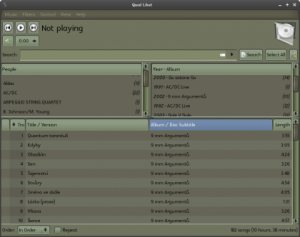
Image of inspirational, culture, premises - 77811917. Val inductive_hyp = `even implies _even`(s. a Latin phrase meaning from false premises one can prove anything. pattern matching, so this is a workaround. With contradict H, H:False leads to a resolved subgoal. This is just a nicer name for tactics such as elimtype False and other cut False. These dependent types are added because Scala doesn't support type-level Ex falso quodlibet : a tactic for proving False instead of the current goal. My proof requires only a small modification to your Nat definition to work around a missing feature in Scala. It may be impossible to prove ex falso for an arbitrary uninhabited type in Scala, but it's still possible to prove that Even] => Nothing. In order to develop such discussion, we will focus on the history of the Principle of Non-Contradiction and also on that of the ex falso sequitur quodlibet. Supported formats include MP3, Ogg Vorbis, FLAC, Musepack (MPC), WavPack, and MOD/XM/IT. A shorter example of why EFQ could be needed: sealed trait Bottomĭef `bottom implies anything`(btm: Bottom): Any = ? explain how neutral values like 0 or id are extremely useful when working with symbolic variables to me right now. Ex Falso displays and edits audio metadata tags. Note: Proving that one is odd could be done with another (but equivalent) definition of evenness - but that is not the point. Proper noun edit ex falso quod libet ( logic) The principle or axiom of logic stating that if a contradiction or a false proposition is proven to be true, then it proves that everything is true. Maybe I am barking up the wrong tree, is a pattern match the wrong idea - could EFQ be shown in some other way?

Is there any way to prove this constructively? If empty pattern matches is the way to go - I'd accept any version of Scala or even a macro or plugin, as long as I still get errors for empty pattern matches when the type is inhabited. The principle or axiom of logic stating that if a contradiction or a false proposition is proven to be true, then it proves.

The compiler will happily tell me that none of the cases I've given are possible with the error pattern type is incompatible with expected type, but leaving the match block empty will be a compile error. In Scala it is possible to define the natural numbers on a type level, e.g. Here is a short example of why it would be useful. How do I show that anything follows from a value of a type with no constructors in Scala? I would like to do a pattern match on the value and have Scala tell me that no patterns can match, but I am open for other suggestions.


 0 kommentar(er)
0 kommentar(er)
